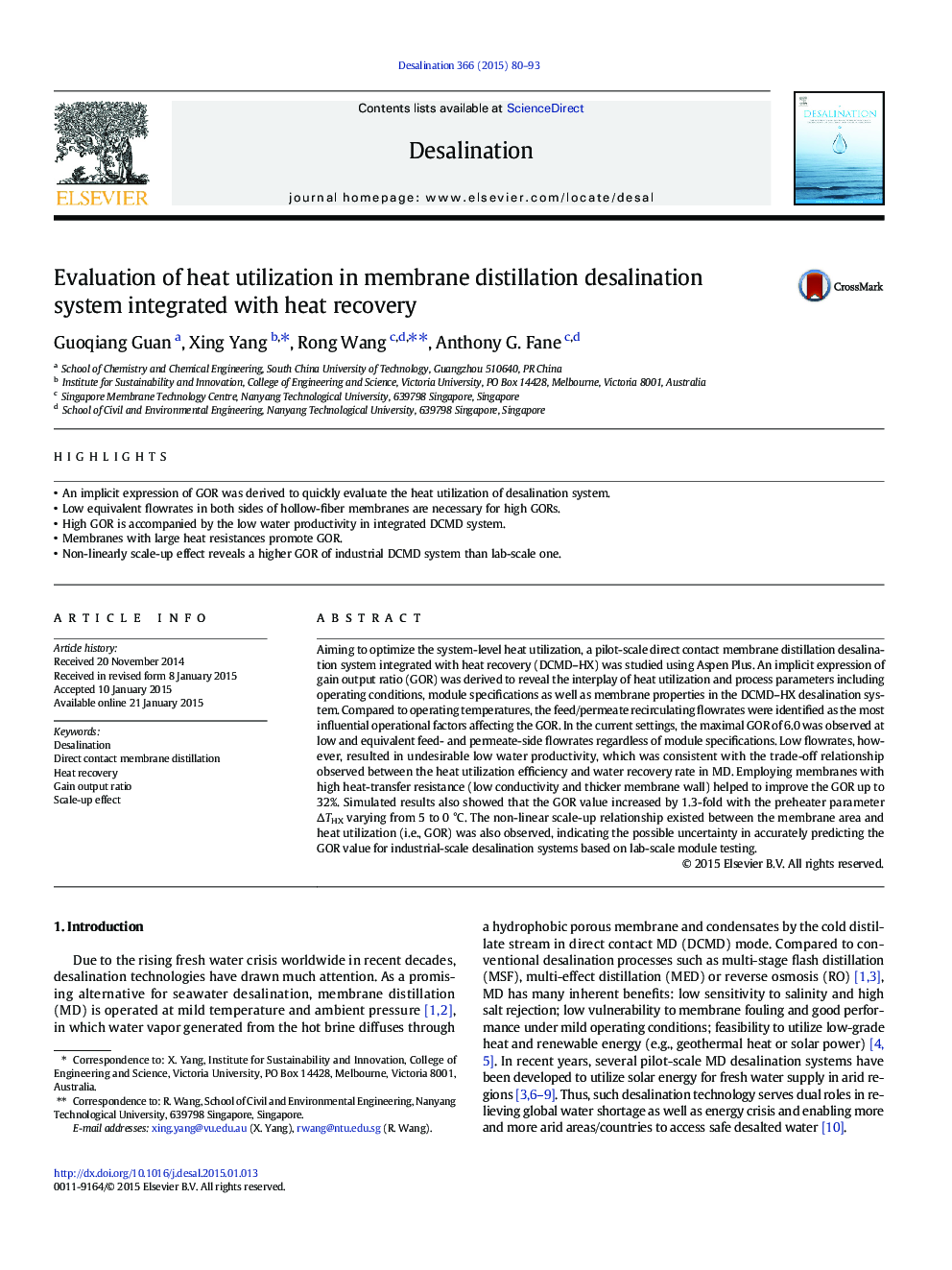| Article ID | Journal | Published Year | Pages | File Type |
|---|---|---|---|---|
| 623102 | Desalination | 2015 | 14 Pages |
Abstract
Aiming to optimize the system-level heat utilization, a pilot-scale direct contact membrane distillation desalination system integrated with heat recovery (DCMD-HX) was studied using Aspen Plus. An implicit expression of gain output ratio (GOR) was derived to reveal the interplay of heat utilization and process parameters including operating conditions, module specifications as well as membrane properties in the DCMD-HX desalination system. Compared to operating temperatures, the feed/permeate recirculating flowrates were identified as the most influential operational factors affecting the GOR. In the current settings, the maximal GOR of 6.0 was observed at low and equivalent feed- and permeate-side flowrates regardless of module specifications. Low flowrates, however, resulted in undesirable low water productivity, which was consistent with the trade-off relationship observed between the heat utilization efficiency and water recovery rate in MD. Employing membranes with high heat-transfer resistance (low conductivity and thicker membrane wall) helped to improve the GOR up to 32%. Simulated results also showed that the GOR value increased by 1.3-fold with the preheater parameter ÎTHX varying from 5 to 0 °C. The non-linear scale-up relationship existed between the membrane area and heat utilization (i.e., GOR) was also observed, indicating the possible uncertainty in accurately predicting the GOR value for industrial-scale desalination systems based on lab-scale module testing.
Related Topics
Physical Sciences and Engineering
Chemical Engineering
Filtration and Separation
Authors
Guoqiang Guan, Xing Yang, Rong Wang, Anthony G. Fane,
